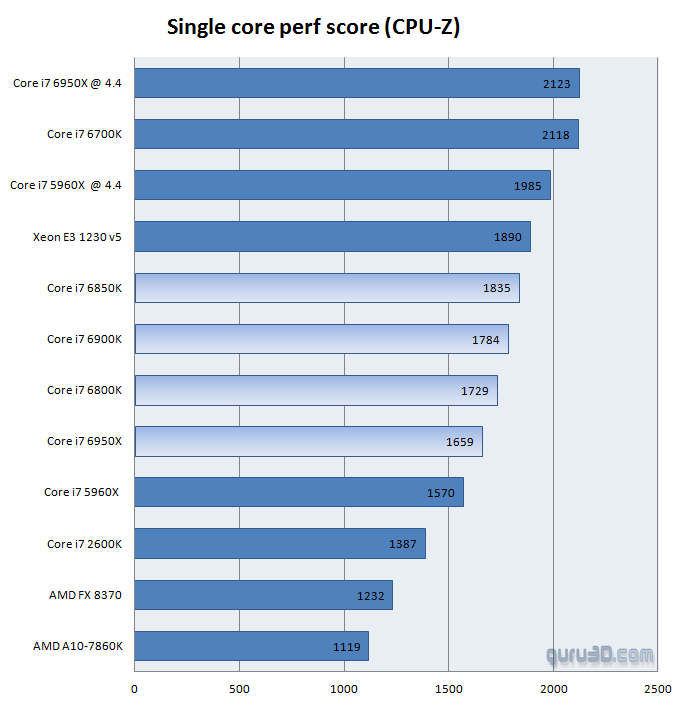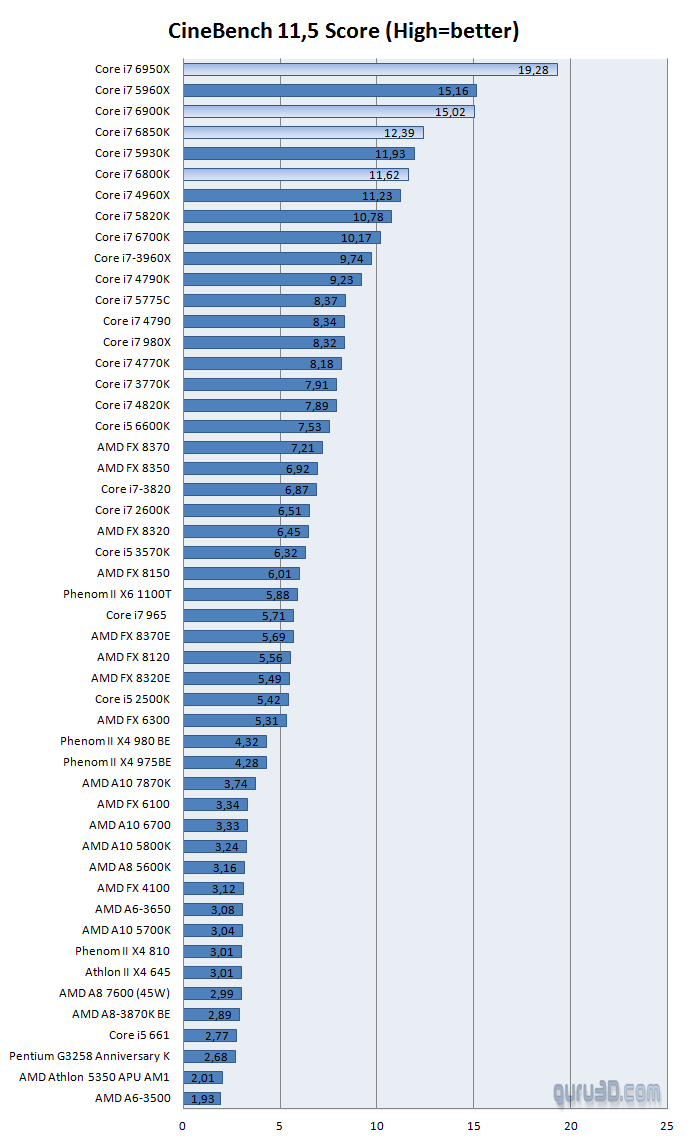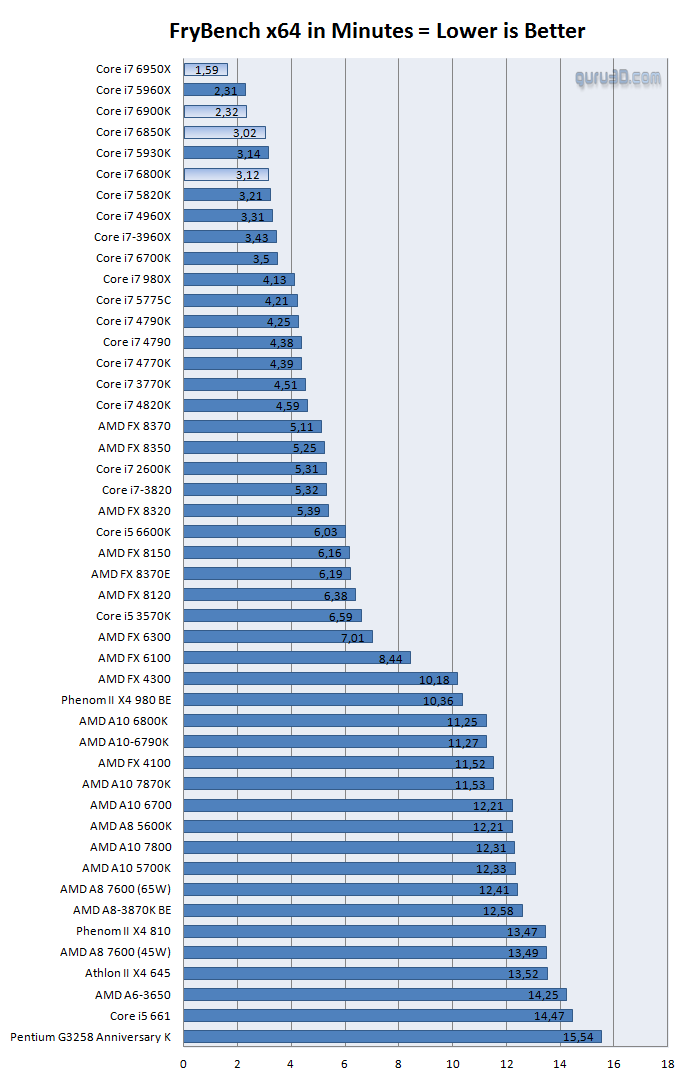Performance - CPU-Z | FryRender | CineBench
CPU-Z Internal Benchmark
CPU-Z was recently updated with a fairly quick to run, yet seriously proper benchmark. I decided to include the results as it offers something you can easily replicate and try at home. Next to that, it actually is a pretty nice little performance measurement to test the RAW CPU performance, next to that the performance is measured both as per core and multi-threaded core performance. Here are some numbers, we'll build up more results over time:
At single core performance it's all about clock frequency, how fast one core is. And if the fastest core on the Core i7 6950X is clocked at a maximum of 3.5 GHz and the fastest core on a Core i7 6700K can run at 4.2, you can imagine which is faster. This thesis matters a lot as most applications these days are still very limited in threading, often 2 to 4 cores are used at maximum.
Once you start to accumulate more cores the relative perf will jump up fast, of course. Unfortunately not all software makes use of many cores/threads, including games, hence per core perf matters more opposed to having, say, 8 cores over a quad-core processor.
Now if you go "HUH?" on single threaded performance, allow me to explain. The Core i7 6950X has 10 cores, and thus the base clock and even turbo clock is much lower compared to modern age 4-core processors. Next to that one, two out of the 10 cores can boost to 3.5 GHz, then another two get a turbo to 3.4 GHz and so on down to 3.0 GHz. Luckily we can overclock/tweak these cores quite easily to 4+ GHz, so that will make up for it again. As a teaser, I included results for the CPU at 4.4 GHz on all cores. Once you do that, things normalize really fast from "HUH?" to "Wow!"
Processor performance: CineBench 11.5
CINEBENCH is a real-world cross platform test suite that evaluates your computer's performance capabilities. CINEBENCH is based on MAXON's animation software CINEMA 4D, which is used extensively by studios and production houses worldwide for 3D content creation. MAXON software has been used in blockbuster movies such as Spider-Man, Star Wars, The Chronicles of Narnia and many more. This test scenario uses all of your system's processing power to render a photo-realistic 3D scene (from the viral "No Keyframes" animation by AixSponza). This scene makes use of various different algorithms to stress all available processor cores. The Cinema 4D engine can use systems with up to 64 processor threads which makes it rather future proof and also excellent for multi-core processors. The test scene contains approximately 2,000 objects containing more than 300,000 total polygons and uses sharp and blurred reflections, area lights and shadows, procedural shaders, antialiasing, and much more. The result is given in points. The higher the number, the faster the processor. In these charts we show you several CPUs and platforms.
Processor Performance: FryRender
FryRender is a benchmarking framework for everyone, not just for 3D users; anyone out there, from hardware integrators or hardware reviewers to die-hard gamers. Since its conception, FryRender has been designed with the aim of being the most muscled engine in its category. As a result, and after several years of intense development, FryRender's core doesn't let a single CPU cycle be wasted. Its routines have been written to be cache efficient, and to take the maximum advantage possible of the new multi-threading capabilities present in modern CPU architectures. Being a highly-optimized and extremely math-intensive application (mostly in floating-point) which makes a very efficient use of the system's cache, we think that FryRender is the near perfect tool for measuring "how much brute computational power" a computer is able to deliver.





